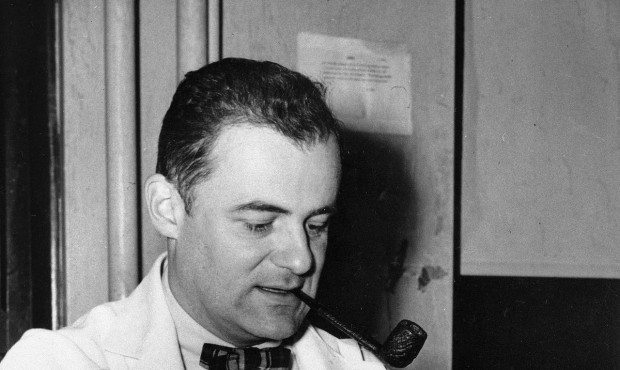The down and dirty about nerve agents like sarin
Aug 26, 2013, 9:17 PM
WASHINGTON (AP) – Secretary of State John Kerry said Monday that a large-scale chemical weapons attack occurred in Syria. There are still many questions about chemical weapons, some of which can be answered easily and some of which can’t.
Q: What chemical weapon are we talking about?
A: It’s not clear yet. But experts point to a class of chemical weapons called nerve agents because of the symptoms seen in the victims in Syria. Nerve agents commonly include sarin, soman, VX and taubun. They are called nerve agents because they block transmission of nerve cell transmissions.
Q: What are the symptoms reported and how does that tell us nerve agents were used?
A: The humanitarian organization Doctors Without Borders reported seeing “large number of patients arriving with symptoms including convulsions, excessive saliva, pinpoint pupils, blurred vision and respiratory distress.” Dr. Amesh Adalja, a senior associate for the Center for Biosecurity at the University of Pittsburgh Medical Center, said what the group of doctors in Syria is reporting “is what a textbook would list to say nerve-agent poison.” Symptoms like incredibly small pupils help say it is not another chemical agent like mustard gas or chlorine gas.
Q: What’s the difference between the various nerve agents?
A: Essentially the four nerve agents do the same things to the body, kill in the same way, have the same antidote and treatment, and are all banned by the international convention signed by 189 countries so there is no practical difference for the U.S. in planning a response if it was sarin or VX, Adjala said. Sarin, sometimes called GB, is the most volatile of the nerve agents and VX the most lethal.
Q: Why do I hear the name sarin associated with this attack more than the others?
A: Mostly it is based on the Syrian leadership’s past likely use and storage of sarin, Adalja said.
Q: Will we ever know which nerve agent it is?
A: Maybe. Weapons inspectors can use relatively simple chemical analysis to determine which compound it was, based on body, soil and weapon samples, Adalja said. But he added that those samples degrade quickly and there’s a chance we won’t ever know. If they got good samples, we’ll know in a day or two probably, he said. But in 1993, Physicians for Human Rights said that its doctors and a lab at Britain’s Defense Ministry were able to determine the use of sarin in Iraq four years earlier because of residues of a chemical that had the unique fingerprint of sarin.
Q: How do nerve agents kill?
A: They break down an enzyme that allows nerves to talk to each other, so victims become over-stimulated. In addition to other symptoms, there’s chest tightening, rapid breathing, vomiting, diarrhea, confusion, headache, changes in heart rate, loss of consciousness, convulsions and paralysis. Eventually, and depending on dose levels it could only be a matter of minutes, you do die of respiratory failure, Adalja said.
Q: Is it painful?
A: “The seizure, being paralyzed, if you are still awake, that can almost be torturous,” Adalja said.
Q: If it is sarin, can you see it or smell it?
A: No. As a liquid it is odorless, colorless and tasteless. It’s often used in gas form but can kill with liquid content on the skin.
Q: Is it natural?
A: No. It is man-made, created in 1938 as a pesticide and similar to certain kinds of insecticides called organophosphates now used. However nerve agents are much more potent.
Q: Is there a treatment?
A: Yes, if doses are low enough and you catch it in time. There is a dual chemical injection shot that many people in the military carry with them and it must be used quickly. Also if you think you are exposed, you need to remove your clothes and wash thoroughly.
Q: Has sarin been used much in the past?
A: The most famous sarin attack was a 1995 terror attack on the Tokyo subway that killed 13 people and injured about 6,000 people.
Q: How do you get rid of the stuff?
A: Experts say nerve gas has to be disposed of properly in locations with high temperatures and controls to keep gas from escaping to minimize the risk of accidentally gassing other people.
Q: So how can the U.S. military destroy Syria’s nerve gas supplies?
A: “Several of the options that are being discussed for military intervention have downside risks,” said Amy Smithson, a chemical weapons expert at the Center for Nonproliferation Studies. “Bombing the (weapons storage) site risks releasing the chemicals over nearby population.” Making matters worse, Syrian President Bashar Assad has threatened to use the weapons if attacked, she said.
___
Online:
Centers for Disease Control and Prevention on sarin:
http://www.bt.cdc.gov/agent/sarin/basics/facts.asp
Organisation for the Prohibition of Chemical Weapons (which implements the international chemical weapons convention):
http://www.opcw.org/
___
Follow Seth Borenstein on Twitter at
http://twitter.com/borenbears
(Copyright 2013 The Associated Press. All rights reserved. This material may not be published, broadcast, rewritten or redistributed.)








